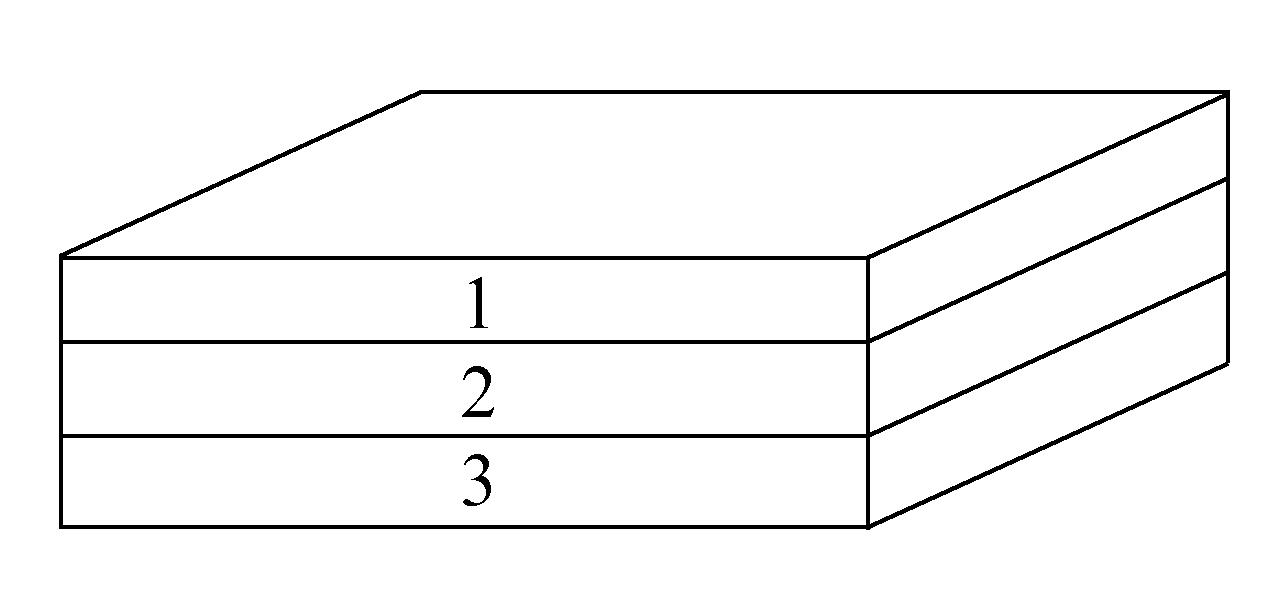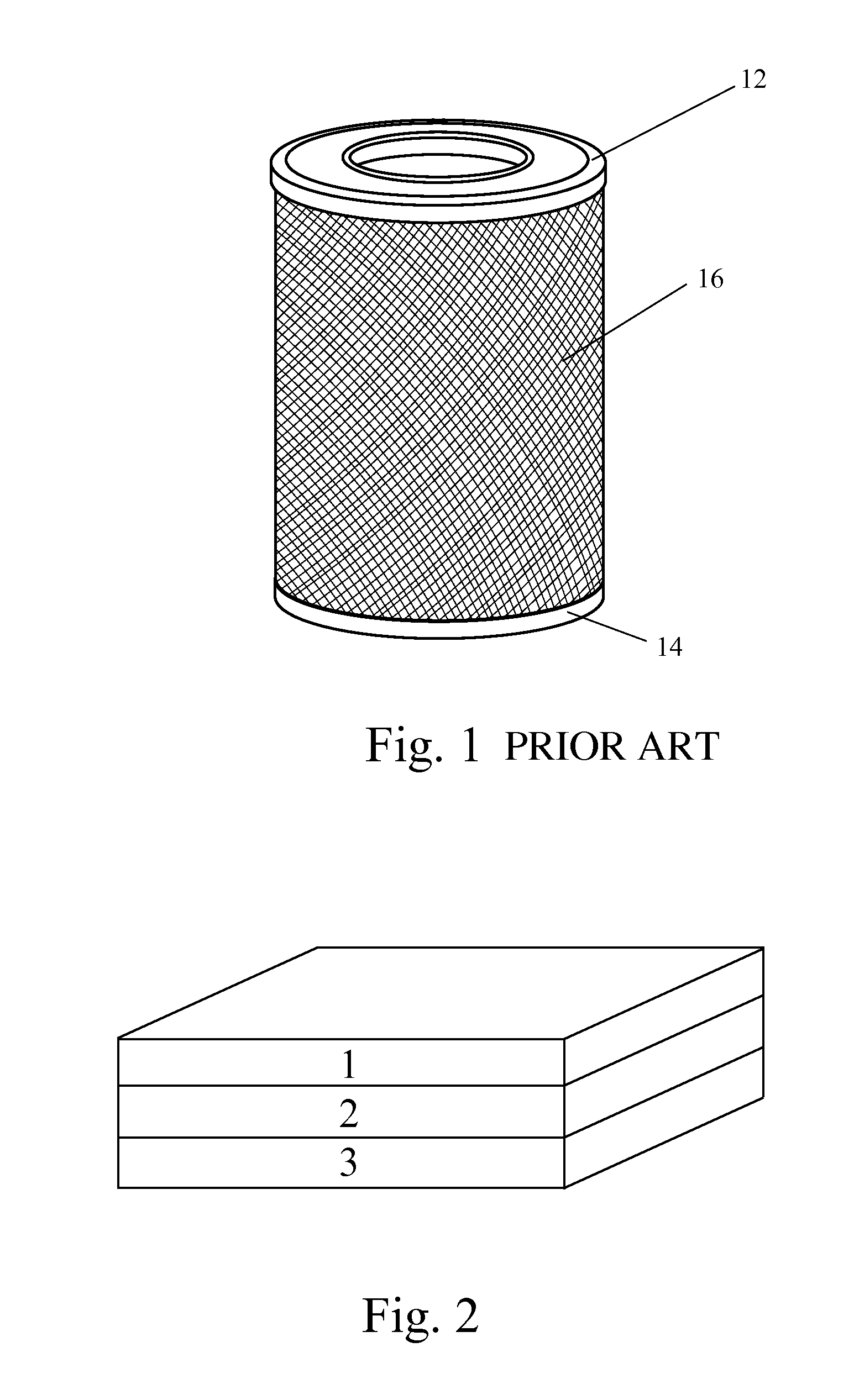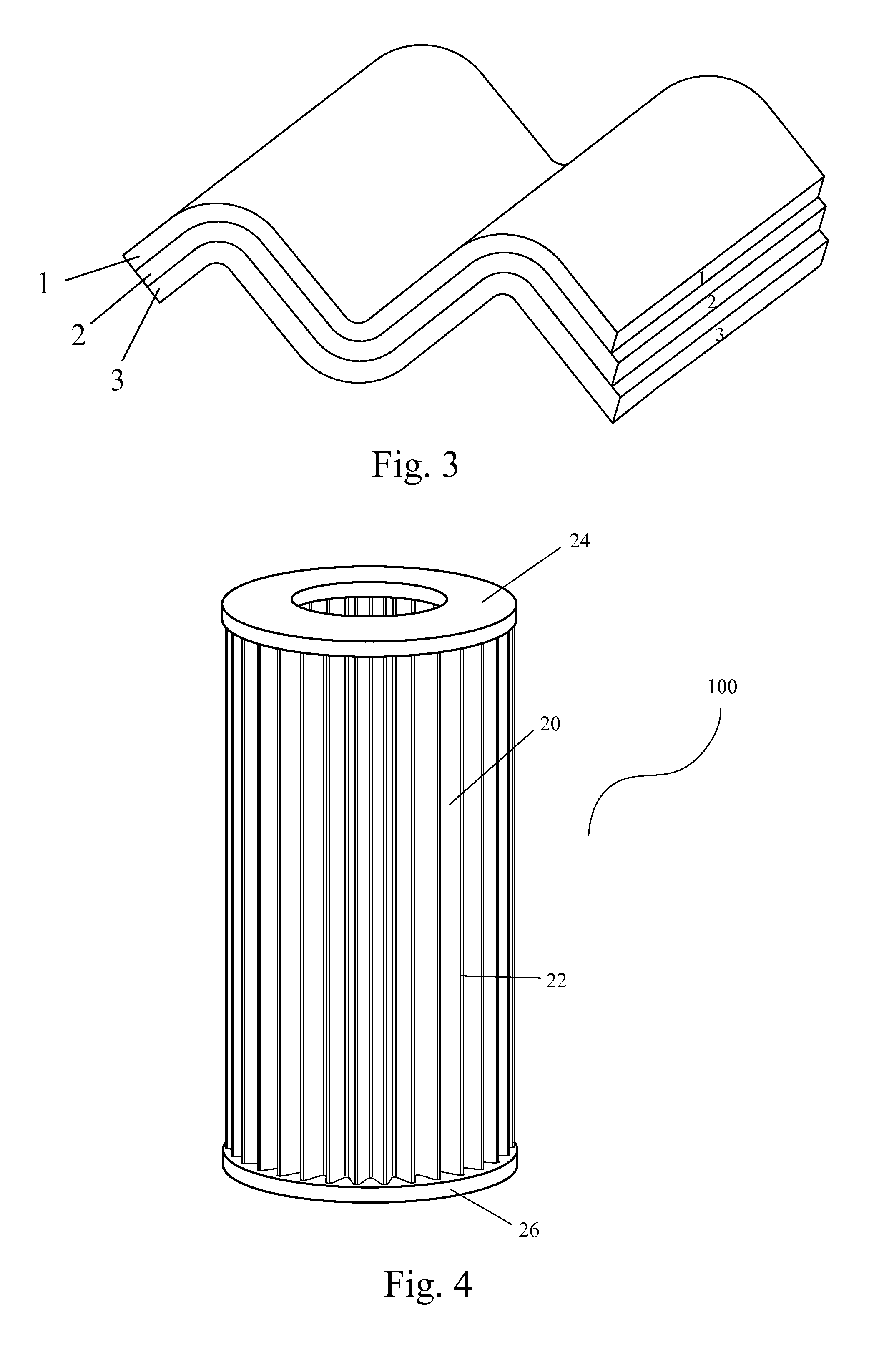Nonwoven fabric, method for producing the same, and filter formed with the same
a nonwoven fabric and filter technology, applied in the direction of filtration separation, fibre mixing, separation processes, etc., can solve the problems of increasing costs, poor stiffness of nonwoven fabric made of short fibers such as conventional felts, and reducing the performance of filter mediums, etc., to achieve excellent hardness and stiffness, remarkable moldability, and high compressive strength
- Summary
- Abstract
- Description
- Claims
- Application Information
AI Technical Summary
Benefits of technology
Problems solved by technology
Method used
Image
Examples
Embodiment Construction
[0056]The invention primarily relates to a nonwoven felt fabric produced by for example a needle punch method using short fibers. The felt fabric exhibits excellent hardness and stiffness. The felt fabric also has a remarkable moldability, and is capable of retaining its shape when it is molded into virtually any shape or configuration. The nonwoven felt fabric produced by the needle punch method is called needle punched felt, while a felt generally refers to a sheet which is formed by intimately bonding wools or fleeces.
[0057]The constituent materials of the nonwoven fabric can be classified into long fiber and short fiber. In brief, the long fiber is a filament like cocoon silk, and the short fiber is fleece-like or cotton-like. The long fiber is a continuous single fiber, and the fabric made from the long fibers has a gram weight of 200 to 300 g / m2. The term “gram weight” represents a weight in gram per square meter of the fabric, a measure of thickness and density of the fabric ...
PUM
| Property | Measurement | Unit |
|---|---|---|
| Temperature | aaaaa | aaaaa |
| Temperature | aaaaa | aaaaa |
| Temperature | aaaaa | aaaaa |
Abstract
Description
Claims
Application Information
 Login to View More
Login to View More - R&D
- Intellectual Property
- Life Sciences
- Materials
- Tech Scout
- Unparalleled Data Quality
- Higher Quality Content
- 60% Fewer Hallucinations
Browse by: Latest US Patents, China's latest patents, Technical Efficacy Thesaurus, Application Domain, Technology Topic, Popular Technical Reports.
© 2025 PatSnap. All rights reserved.Legal|Privacy policy|Modern Slavery Act Transparency Statement|Sitemap|About US| Contact US: help@patsnap.com



